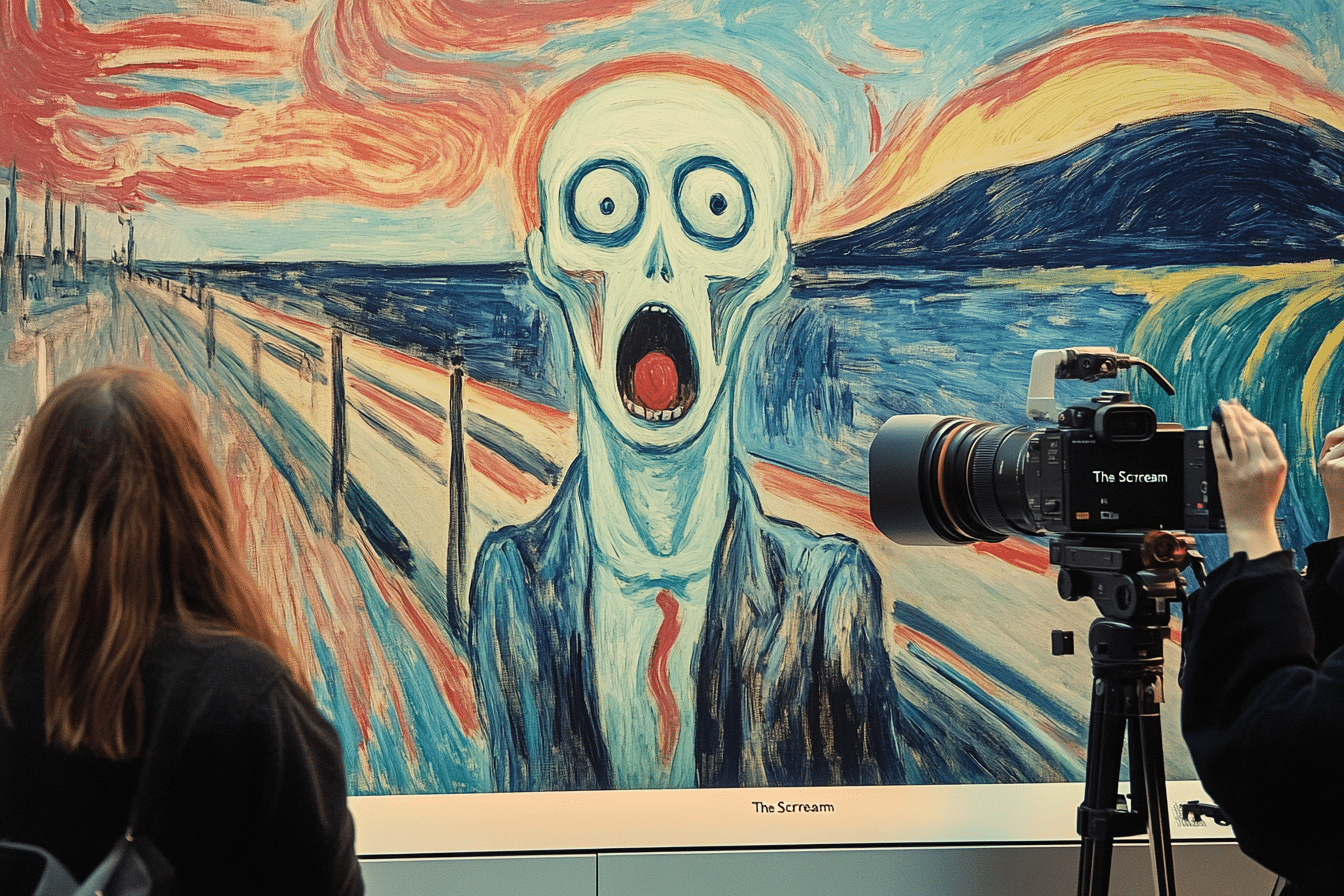In a groundbreaking initiative, 12 significant institutions have joined forces to use artificial intelligence (AI) to restore fading colors in famous artworks. The PERCEIVE project, backed by the European Union, aims to bring new life to iconic pieces such as Edvard Munch’s The Scream by reconstructing their original hues. Through cutting-edge AI tools, conservators can now explore how these works of art looked in the past and how they might appear in the future.
A New Hope for Faded Masterpieces
Launched last year, the PERCEIVE project seeks to develop a comprehensive AI toolkit that will help reconstruct the colors of five critical categories of art: statues, paintings, textiles, photographs, and augmented reality works. Participating institutions, such as the MUNCH Museum in Oslo and the Art Institute of Chicago, are contributing data to train these AI systems. “The goal is to create a service-based AI architecture,” said lead scientist Irina Crina Anca Sandu from the MUNCH Museum. The project brings together experts and enthusiasts alike to restore artworks in a way never before possible.
The Scream’s Journey Through Time
One of the critical focuses of PERCEIVE is the reconstruction of the vibrant colors in Edvard Munch’s The Scream, a painting whose bold hues have faded over time. Munch once wrote, “I painted this image, painted the clouds like real blood. The colors screamed.” The project allows conservators to recapture this intensity and offer viewers a glimpse of the painting as Munch initially saw it. Sandu describes the process as a “step-by-step evolution,” with the AI predicting what The Scream looked like in 1893 and how it might appear decades from now.
Innovative AI Tools Unveiled
At the recent InART conference in Oslo, researchers presented prototypes of several AI tools developed by the project. One such tool, the “Autochrome Demonstrator,” allows users to digitally restore historical Autochrome plates, while the VR Chroma Demonstrator provides a virtual environment to preserve augmented reality art. These tools are helping conservators digitally restore and maintain the colors of works of art in ways previously unimaginable.
Ethical Questions in Art Restoration
While PERCEIVE’s AI tools offer revolutionary ways to restore art, they also raise important ethical questions. As conservation scientist William Wei points out, “What do you do with an object if you want to restore or conserve it?” Conservators face decisions about authenticity, and AI brings these challenges to the forefront. Sandu emphasizes the importance of context when interpreting data. “The first context for The Scream is what Munch writes: how he got inspired by nature,” she explains. The project aims to balance scientific accuracy with artistic intent and the emotional message behind the artwork.
A Future Beyond Our Lifetime
With the project set to conclude in 2026, PERCEIVE researchers hope that the tools they’ve developed will become widely available, benefiting experts and the public. As Sandu aptly put it, The Scream and other masterpieces are “part of the universal heritage of humanity,” AI may help preserve their stories for generations to come. By utilizing these cutting-edge technologies, the PERCEIVE project ensures that these artistic legacies continue to inspire beyond our lifetimes.
The PERCEIVE project is pioneering a new era in art conservation, harnessing the power of AI to restore the vibrant colors of the past. As institutions and researchers work together, this collaboration offers hope for preserving the emotional and historical significance of masterpieces like The Scream. Through AI, we can now explore art in its most accurate form, ensuring that future generations can appreciate it as the artists intended.





